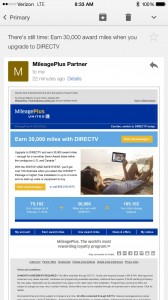
In this post, we’re setting the record straight. We aim to debunk the most common myths surrounding link building.
The Role of Links in SEO
Understanding the role of links in SEO is fundamental for anyone looking to improve their website’s performance in search engine rankings. Links are not just digital pathways connecting one web page to another; they are crucial indicators of a website’s authority, relevance, and trustworthiness to search engines like Google.
Why Links Matter
At its core, link building is about establishing connections. Each link pointing to your site from another website acts as a vote of confidence, signaling to search engines that your content is valuable and worth ranking highly. But it’s not just about having a multitude of links; the quality, relevance, and context of those links play a significant role in determining how search engines evaluate your site.
Internal vs. External Links
There are two types of links:
-
Internal Links are the ones you create within your own website, linking one page to another. This not only helps with website navigation but also spreads link equity (ranking power) throughout your site, improving the SEO of individual pages.
-
External Links, on the other hand, are links from other websites pointing to your site. These are invaluable for SEO as they demonstrate to search engines that other entities find your content useful and credible enough to link to.
Search Engines and Links
Search engines crawl the web, and links are a primary method of discovering new pages to crawl and index. They follow links from one page to another, indexing content as they go, and understanding the network of connections between pages. Links contribute to a website’s authority by showing search engines how pages are related and which pages are valuable based on the number of links pointing to them.
Moreover, the anchor text used in links provides search engines with context about the linked page, further influencing how that page ranks for specific keywords. This context is crucial because it helps search engines understand what your page is about and how it should rank in search results.
The Takeaway
In summary, links help search engines discover new content, understand the relationships between pages, and assess the value and authority of websites. Building a strong link profile is not just about accumulating as many links as possible but focusing on the quality, relevance, and strategic placement of those links to boost your SEO effectively.
Debunking Top 10 Link Building Myths
Navigating the world of SEO can sometimes feel like walking through a minefield of myths and misconceptions, especially when it comes to link building. Let’s clear the air and debunk the top 10 link building myths, setting you on a path to informed and effective SEO strategies.
Myth 1: More Links Guarantee SEO Success
The belief that simply amassing a large number of links will boost your SEO is misleading. The truth is, search engines prioritize the quality and relevance of links over quantity. A few well-placed, high-quality links from authoritative sites are far more beneficial than a slew of low-quality links.
Myth 2: Only Backlinks Matter
While backlinks (links from other websites to yours) are vital, disregarding internal links is a mistake. Internal linking helps distribute page authority throughout your site and improves user navigation, which can significantly impact your SEO performance.
Myth 3: Paid Links Secure Immediate Rankings
One of the most pervasive myths is the belief that paying for links guarantees immediate improvements in search engine rankings. The reality is far more nuanced.
Buying Links vs. Paying for Link Placement
Buying a Link: This refers to the direct purchase of a link from another website with the intention of manipulating search rankings. This transactional approach is what search engines penalize. It typically involves little consideration for the relevance or quality of the linking domain, focusing instead on quantity.
Paying for the Work to Get a Link Placed: This is a more ethical and sustainable approach, where you invest in content creation, outreach, and relationship building. The payment is not for the link itself but for the effort and skill involved in creating content that naturally earns links from reputable sites. This method aligns with Google’s guidelines and focuses on adding value to the web while building your site’s authority organically.
Myth 4: Links from High-PageRank Sites Are the Only Ones Worth Having
Diversity in your link profile is essential. Links from smaller, niche websites can be incredibly valuable, especially if they’re closely related to your industry or audience. It’s the relevance and context that often matter more than just the site’s PageRank.
Myth 5: Link Building Is a One-Time Task
SEO and link building are ongoing processes. The digital landscape is constantly evolving, and so should your link building efforts. Regularly creating valuable content and engaging with your community are crucial for continuous link acquisition.
Myth 6: Anchor Text Must Be Exact Match
Using the same exact match anchor text for all backlinks can appear manipulative to search engines and may trigger penalties. A natural and varied anchor text profile is preferred, reflecting how different users might link to your content organically.
Myth 7: All Directories and Forum Links Are Bad
Not all directory or forum links are created equal. High-quality, industry-specific directories and active forums can be valuable sources of backlinks, as long as they’re relevant and used judiciously.
Myth 8: Link Building Can Be Automated Safely
Automated link building tools often result in spammy, low-quality links that can harm your SEO. Personalized, strategic outreach and content creation are the most effective and safest ways to build links.
Myth 9: Nofollow Links Offer No SEO Value
While nofollow links don’t pass PageRank, they can still drive traffic and increase visibility, contributing to your site’s overall online presence. They also help create a more natural link profile.
Myth 10: Link Building Strategies Don’t Need to Evolve
The algorithms used by search engines are continually updated, meaning tactics that worked (March 22, 2024) may not work today. Staying informed about the latest SEO trends and adapting your strategies accordingly is vital for ongoing success.
The Devolving Role of Links in Google’s Ranking Algorithm
While links have historically been a cornerstone of SEO strategies, recent trends and statements from Google suggest that their relative importance as a ranking factor is being recalibrated. This shift is part of Google’s broader initiative to understand web content more deeply and to reward factors that directly contribute to user satisfaction.
Beyond Links: Google’s Preferred Signals
Google is increasingly prioritizing user experience signals and content relevance as key determinants of a page’s value. These include:
-
User Engagement Metrics: Metrics such as click-through rate (CTR), time on site, and bounce rate are believed to play a role in informing Google about the quality of a page and its relevance to search queries.
-
Page Experience Signals: With the introduction of Core Web Vitals, Google has made it clear that the technical performance of a page (loading speed, interactivity, and visual stability) is crucial for ranking.
-
Content Quality and Relevance: Google’s sophisticated natural language processing algorithms, like BERT and MUM, enable it to understand the context and quality of content more deeply than ever before. These technologies help Google match search queries with content that best answers user questions, even if the content has fewer inbound links.
Google’s Patents and the Direction of SEO
Google’s ongoing innovations and adjustments to its algorithm are often reflected in its patents, which provide insight into the company’s research and priorities. A few notable patents related to link evaluation and other ranking signals include:
-
(US Patent 9,135,635): This patent suggests that Google considers user behavior signals, such as the interaction with search results, as factors in ranking documents. It implies a move towards valuing how users engage with content.
-
(US Patent 9,672,987): Reflecting the emphasis on page experience, this patent indicates that Google may use the load times of resources as a factor in ranking search results, aligning with the Core Web Vitals initiative.
-
(US Patent 8,682,892): While this patent covers the use of links in determining the quality of documents, it also hints at the incorporation of other signals, suggesting a multifaceted approach to ranking.
What This Means for Your Link Building and SEO
The diversification of ranking signals beyond links is a reminder of the importance of a holistic SEO strategy. Focusing solely on link building without considering user experience, content quality, and technical performance is likely to yield diminishing returns. Instead, businesses should adopt a comprehensive approach that balances traditional link building with efforts to improve site speed, enhance user engagement, and produce authoritative content that genuinely satisfies user intent.
Five Effective Link Building Strategies
In the ever-evolving world of SEO, link building remains a critical component of a successful strategy. However, as search engines like Google continue to refine their algorithms, it’s clear that not all link building techniques are created equal. Here, we explore five effective link building strategies that align with current best practices and can help improve your website’s visibility and ranking.
1. Creating and Promoting High-Quality Content
The backbone of any successful link building strategy is the creation of high-quality, engaging content. Content that provides value, solves problems, or answers questions is more likely to be shared and linked to by other websites. Think beyond blog posts to include original research, infographics, videos, and interactive tools. Once created, actively promote your content through social media, email newsletters, and outreach to relevant influencers in your niche.
2. Guest Blogging with a Purpose
Guest blogging, when done correctly, can be a powerful way to gain high-quality links. The key is to target reputable sites within your industry and propose content that adds value to their audience. Focus on building relationships rather than just acquiring links. Quality guest blogging opportunities are those where the host site’s audience aligns closely with your own, ensuring that the link is relevant and valuable.
3. Leveraging Industry Partnerships and Relationships
Building and leveraging relationships within your industry can lead to natural link building opportunities. This could involve co-authoring content with industry peers, participating in joint webinars, or featuring in interviews and podcasts. These collaborations not only provide valuable links but also help establish your authority in your field.
4. Broken Link Building
Broken link building involves finding broken links on other websites that are relevant to your content and reaching out to suggest your page as a replacement. This strategy provides a service to the host website by helping them fix a poor user experience while offering your link as a suitable alternative. It requires research and tact but can be a mutually beneficial way to gain backlinks.
5. Engaging with Online Communities
Engage actively in online communities such as forums, social media groups, and Q&A sites like Quora and Reddit. By providing insightful answers and valuable contributions, you can establish yourself or your brand as an authority. While direct link building opportunities in these venues should be approached with care to avoid spamming, they can lead to natural link acquisition as users reference your contributions or explore your profile.
Leveraging Tools for Successful Link Building
In the intricate world of SEO, having the right tools at your disposal can significantly enhance your link building efforts. These tools not only streamline the process but also provide insights that can inform your strategy and improve your outcomes. Here’s a look at several types of tools that are indispensable for effective link building, along with how they can help you achieve your goals.
Backlink Analysis Tools
Backlink analysis tools are essential for understanding your own link profile as well as those of your competitors. They offer insights into the number of backlinks, the quality of these links, and the diversity of linking domains. By analyzing this information, you can identify strengths and gaps in your own strategy, discover new link opportunities, and monitor your progress over time. Popular options include , , and .
Content Research Tools
Content research tools help you identify topics that are likely to attract links by showing what’s currently popular or trending in your industry. Tools like or the Content Explorer feature in allow you to see which pieces of content are getting the most shares and backlinks, helping you to generate ideas for your own content that has the potential to earn links.
Outreach and CRM Tools
Effective link building often involves outreach to bloggers, journalists, and webmasters. Outreach and CRM (Customer Relationship Management) tools streamline this process by helping you organize and track your communication efforts. Tools like BuzzStream or Pitchbox provide functionalities for finding contact information, sending personalized outreach emails, and following up. Maintaining organized records of your outreach attempts and responses can be crucial for developing long-term relationships and securing more link placements.
Broken Link Building Tools
Broken link building tools scan websites for broken links (links that no longer work) and provide you with an opportunity to suggest your own content as a replacement. Tools like ’ Site Explorer or the can be invaluable for this strategy, allowing you to quickly identify broken links within your niche and reach out to site owners with a solution that includes your link.
Link Tracking and Management Tools
Once you start building links, it’s important to monitor and manage your link profile. Link tracking and management tools help you keep an eye on new and lost links, assess the value of your existing links, and detect potentially harmful links that could affect your SEO negatively. offers some basic functionalities for tracking your backlinks, but for more in-depth analysis, specialized tools like or might be necessary.
Conclusion
Link building is not just about accumulating as many links as possible but about earning high-quality links that signal trust, authority, and relevance to search engines. This requires a blend of creativity, persistence, and strategic thinking. By focusing on creating valuable content, engaging with your community, and leveraging relationships within your industry, you can build a link profile that supports your SEO goals and drives meaningful traffic to your site.
Remember, SEO and link building are marathon efforts, not sprints. They require time, patience, and ongoing adaptation to shifting search engine algorithms and best practices.
The post Debunking Link Building Myths and Revealing Effective Tactics appeared first on Search Engine People Blog.
(11)
Report Post





